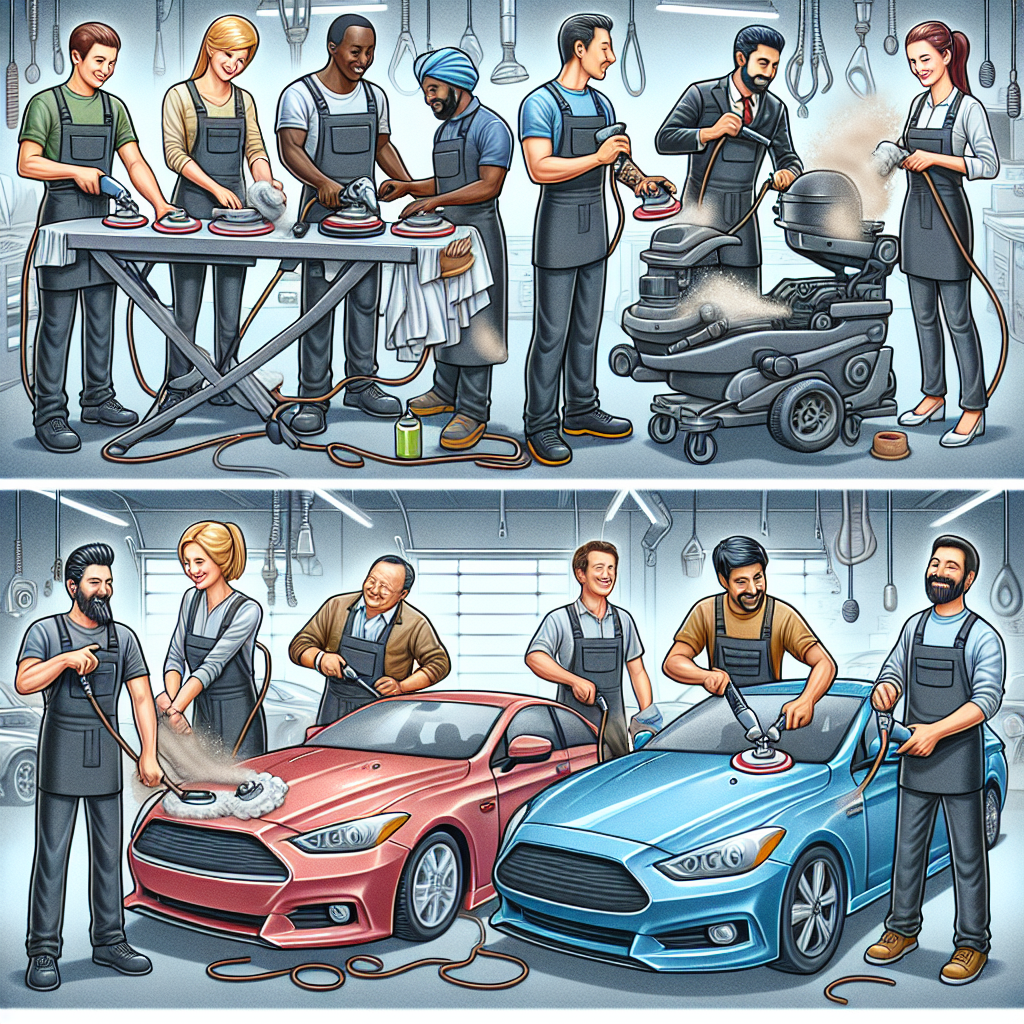Understanding Team Dynamics
The Importance of Team Dynamics
When I first ventured into the world of auto detailing, I quickly learned that a well-functioning team is crucial. Understanding how team dynamics works can make or break your business. We’ve all got different skills and personalities, and recognizing these differences is a key step in maintaining harmony.
Each person brings something unique to the table, whether it’s mad skills in detailing or a laid-back attitude that keeps things relaxed. Realizing how these differing traits interact can help you manage any tension that pops up. Plus, it helps in building a solid foundation of trust among employees.
In my experience, when team members feel understood, they communicate better, collaborate more effectively, and, frankly, enjoy their jobs a whole lot more. That’s what it’s all about, right?
Recognizing Conflict Triggers
One thing I’ve noticed over the years is that conflict often arises from misunderstanding. Whether it’s miscommunication about a task or differing work ethics, identifying triggers is essential. For instance, I recall a time when two detailers clashed because one valued speed over precision while the other had the opposite approach.
By learning what promptly escalates tensions, you can address issues before they spiral out of control. It’s also super helpful to have regular check-ins with your team—this keeps everyone on the same page and helps clarify expectations.
Don’t forget: it’s not just about resolving conflict but preventing it in the first place. Creating an open environment, where everyone feels comfortable sharing their thoughts, can help immensely.
Creating a Positive Work Culture
Nothing beats a positive work culture for maintaining harmony. From my perspective, this means fostering an environment where everyone feels included and valued. Simple acts, like acknowledging good work or even light-hearted banter, can go a long way in lifting spirits.
In my detailing shop, we often have team-building activities. They’re not just about fun; they’re designed to help us bond and understand each other better. This strengthens our team dynamic and reduces the chances of conflict. Why? Because we know each other more personally!
A positive atmosphere also encourages team members to approach you if something’s bothering them instead of letting it fester. Believe me, you want to nip problems in the bud!
Effective Communication Strategies
Open Dialogue
When I say communication is key, I mean it! Creating a platform for open dialogue can make resolving conflicts a breeze. Ensuring that everyone knows they can voice their concerns without fear of backlash is foundational.
Implementing regular meetings, whether they are formal sit-downs or casual catch-ups, can foster this dialogue. By doing this, I’ve found that team members feel more comfortable sharing their thoughts and, importantly, listening to one another.
A little transparency goes a long way. I’ve seen people make amazing progress in understanding each other just through having honest discussions about workplace issues!
Active Listening
While it’s great to encourage speaking up, it’s equally crucial to practice active listening. I’ve learned that when someone feels heard, it drastically changes the tone of a conversation. When conflicts arise, I focus on listening first—understanding their perspective can help diffuse a lot of tension.
A great technique is to paraphrase what someone says back to them. It shows that you’re really paying attention and not just waiting for your turn to speak. This technique has saved me from many misunderstandings.
Moreover, active listening helps teams develop empathy towards each other. And trust me, once they start walking in each other’s shoes, most conflicts simply fade away!
Providing Constructive Feedback
No one likes feeling critiqued, and I get that. But providing constructive feedback is a vital part of conflict resolution. In my experience, framing feedback positively while addressing issues can help team members grow without feeling attacked.
Instead of saying, “You did this wrong,” I’d say, “I think we can improve this section by focusing on X, and here’s how.” This method encourages a more cooperative mindset and helps people stay focused on the solution rather than feeling defensive.
Encouraging self-reflection is also essential. Letting team members evaluate their performance can lead them to recognize areas for improvement, making it a constructive experience for everyone involved!
Enhancing Collaborative Problem Solving
Team Involvement in Solutions
When it comes to problem-solving, involving the whole team can create a sense of ownership and responsibility. From my experience, this collaboration not only leads to better solutions but also empowers team members.
I’ve often gathered my team for brainstorming sessions when an issue arises. Their varying perspectives help us come up with creative solutions. Plus, it encourages accountability. When everyone has a hand in finding the answer, they’re much more invested in the outcome.
This approach also builds camaraderie. A united front not only tackles the issue at hand but strengthens team bonds moving forward.
Setting Group Goals
Another effective way to enhance collective problem-solving is by setting group goals. When everyone is aligned on common objectives, it minimizes conflicts arising from misunderstandings about priorities. In my detailing business, I often set team targets that require collaboration.
For instance, we might aim to finish a certain number of cars in a week. When we work towards this goal together, conflicts over tasks significantly decrease. Everyone understands the bigger picture, and the focus shifts from minor disagreements to achieving those goals.
Plus, achieving those goals as a team gives everyone a sense of accomplishment, which further uplifts morale and minimizes the risk of conflicts.
Utilizing Conflict Resolution Techniques
Lastly, I’ve found that implementing specific conflict resolution techniques can be quite effective. Techniques like mediation or facilitated discussions can help resolve issues more smoothly. During a mediation session, I often sit down with the conflicting parties, allowing them to discuss their perspectives with guidance.
This method encourages them to work towards a mutual understanding rather than just defending their sides. Additionally, training sessions on conflict resolution can arm your team with skills and techniques they can employ in daily situations.
Over the years, I’ve seen a marked improvement in team dynamics through these techniques, reducing conflicts significantly!
Conclusion
Maintaining harmony in your auto detailing team is all about understanding dynamics, fostering communication, and promoting collaboration. It may take time and practice, but by incorporating these strategies into your daily operations, you’ll find yourself leading a high-functioning, happy team ready to tackle any detailing adventure together. Cheers to a harmonious workplace!
FAQ
1. Why is understanding team dynamics important?
Understanding team dynamics is crucial because it helps recognize the diverse traits and attitudes that each member brings. This knowledge is essential for effective communication and collaboration, ultimately reducing conflicts.
2. How can I encourage open dialogue in my team?
Encourage open dialogue by implementing regular check-ins and creating a safe space where team members feel comfortable sharing their thoughts without judgement.
3. What is active listening, and why is it important?
Active listening involves fully focusing on the speaker and understanding their message. It’s vital because it fosters empathy, understanding, and trust—key elements for resolving conflicts smoothly.
4. How can we solve conflicts collaboratively?
Involve your team in brainstorming solutions, set group goals, and encourage everyone to participate actively. This fosters a sense of ownership and accountability, minimizing future conflicts.
5. What conflict resolution techniques can I use?
Techniques such as mediation, facilitated discussions, and providing constructive feedback are effective in resolving disputes while strengthening team dynamics.



